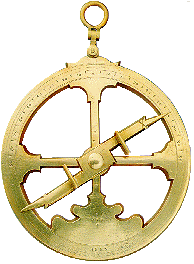Thomas Harry Hope Lloyd-Evans (1941-2014)

The sudden death of the highly respected astronomer Dr Tom Lloyd-Evans on 12 June 2014 at the age of 73 came as a great shock to his family, colleagues and many friends. Tom was born on 2 December 1941 at his father’s Air Force base at Wilmslow, Cheshire, the elder son of Wing Commander Dudley Lloyd-Evans, MC. DFC, and Margaret Ralston Hope, the daughter of Sir Harry Hope Bt., sometime Conservative MP for Angus. When he was still very young his mother brought him to the Hope’s family estate at Kinnettles near Forfar and his father joined them after the war.
The family lived there in relative isolation but Tom and his younger brother Robert were encouraged by their parents and teachers to develop model-making skills and intellectual pursuits including astronomy. The boys had a bedroom in the tower of the big house which had a flat roof with a brilliantly clear sky outlook. They built wooden box cameras with ex- WD Aero-Ektar lenses and began meteor and aurora photography from the late 1950s during vacations from school, Tom was a boarder at Fettes in Edinburgh, Robert in Glenalmond in Perthshire. Between 1958 and 1965 they carried out a systematic programme in which an objective prism was fitted to one of the cameras to capture meteor spectra. It was an outstanding success, with 555 hours of camera work yielding 17 spectra, one of which, a -4 mag. Lyrid on April 22 1960, gave 70 lines. These were measured at the Astronomy Department at St Andrews University, at which Tom was then an undergraduate. This remarkable work, published by the BAA1 which Tom joined in 1956, drew high praise from the President and the Director of the Meteor Section, H. B. Ridley. Tom soon became Assistant Director of the Section. News of this highly accomplished young man soon reached Dundee Astronomical Society and Tom was invited to become a member, thus beginning a long and fruitful association, and his election as an Honorary Member when he left Scotland.
Tom graduated BSc with first class honours in astronomy in 1963 from St Andrews, a holiday place he had loved from childhood, and continued his other interest – variable stars - in his PhD programme which he completed while working as a research assistant at the Radcliffe Observatory in Pretoria in 1968. This was on photometry of star clusters in which he compared the performance of the 1-metre James Gregory telescope at St Andrews with that of the half-size pilot model which, the world’s first Schmidt-Cassegrain camera, had been installed in the Mills observatory, Dundee then in St Andrews in the early 50s.2 Tom considered the smaller telescope to be superior, size for size. Robert meantime gained a First in Chemistry and a PhD at Trinity College, Cambridge.
Tom returned to Edinburgh briefly then back to Radcliffe and in 1974 took a long-term research post at the South African Observatory at the Cape as instrument scientist, working with the spectrograph of the 1.9m Schmidt. He was particularly interested in variable stars, carbon stars and planetary nebulae and among his many activities was the announcement in 1981 with Ian Glass of a period-luminosity relationship for Mira stars in the Large Magellanic Cloud3 and work with an international team investigating polycyclic aromatic hydrocarbons in old stars, also in the LMC. He was President of the Astronomical Society of South Africa 1991-2 and an honorary member in 2001, honorary member of the BAA and a Fellow of the Royal Astronomical Society. He had many other interests in South Africa : archaeology, hill-walking, botany, scuba diving to observe the exotic fauna of the tropical seas, and Scottish country dancing where he met the lady who was to become his wife, chemistry teacher Marlene Hemmes. They married in 1985 and had two children, Robert and Anne.
At 60 Tom retired and brought his family back to St Andrews, to Kinaldy Meadows a few miles south of the town which had clearer skies, and set up a small observatory with a 14-inch Meade reflector, to continue astronomy as he had begun, as an amateur, although he was awarded office space and an honorary lectureship at the University which he used to the full. He contributed thousands of variable star observations to the BAA, The Astronomer, and the American Association of Variable Star Observers, besides many contributions on meteors, aurora and noctilucent clouds. However he was often frustrated like the rest of us, at the increasing light pollution and cloudiness even in the east of Scotland.
Despite his formidable knowledge and scientific insight Tom was rather shy and modest. He had a slight speech impediment, a quiet hesitant voice which listeners sometimes had difficulty in following so he was not an effective orator, but outstanding in discussion and debate. He had a dry sense of humour and a friendly demeanour. We all miss him. Marlene Lloyd-Evans kindly supplied information from a eulogy she gave at a memorial service for Tom, held at All Saints Episcopal Church in St Andrews on June 19 2014, attended by many astronomers.
David Gavine
References
1. Observations of Meteor Spectra J. Brit. Astron. Assoc. 76, 229, 231-243 (1966).
2. King, H. C., The History of the Telescope, London 1955, 374-377.
3. Nature 291, 303-4 (1981).
Thomas Harry Hope Lloyd-Evans


